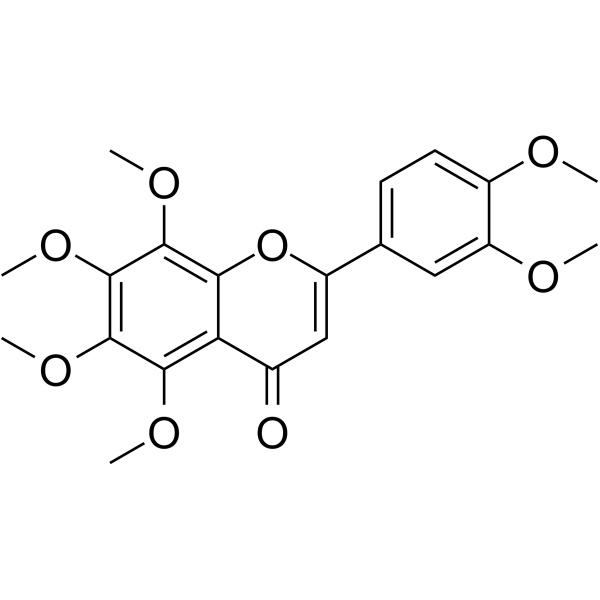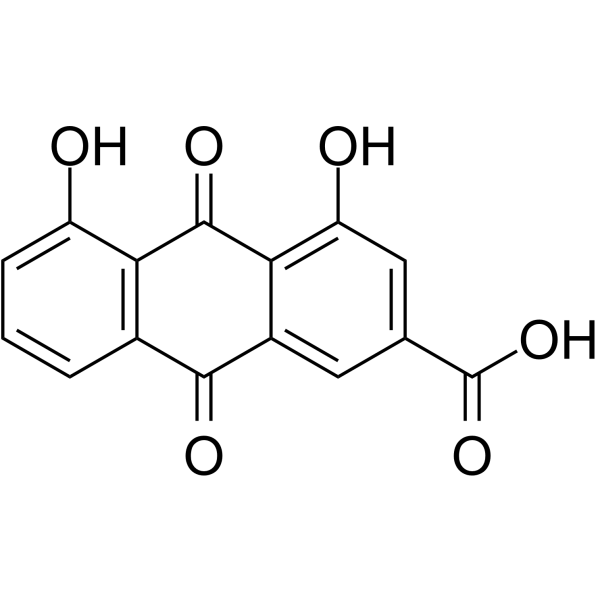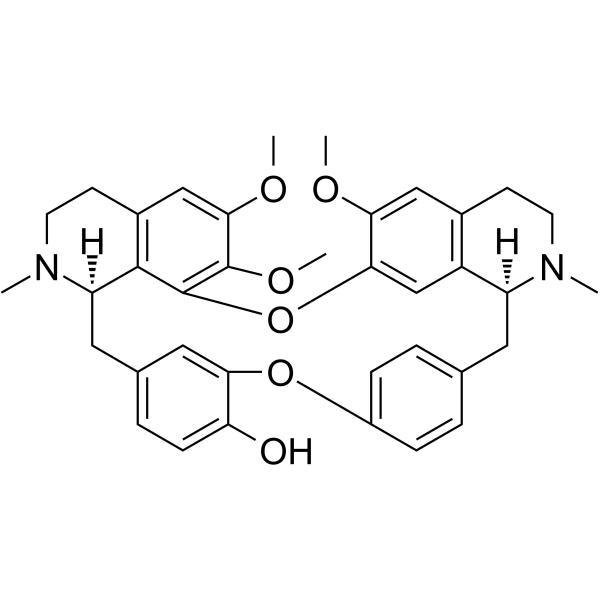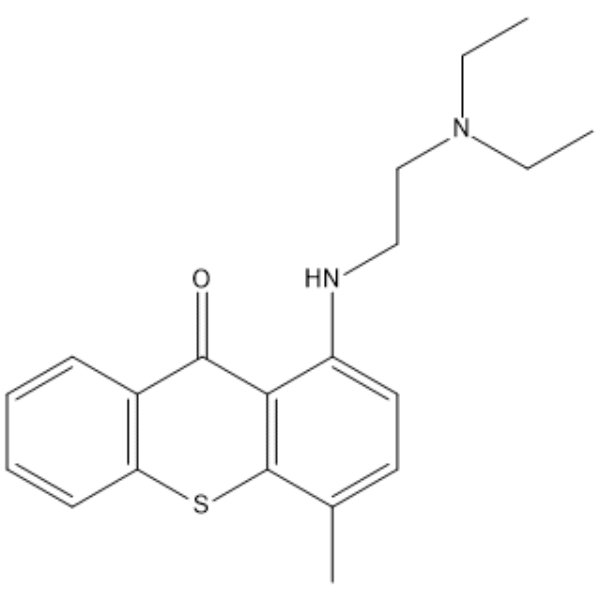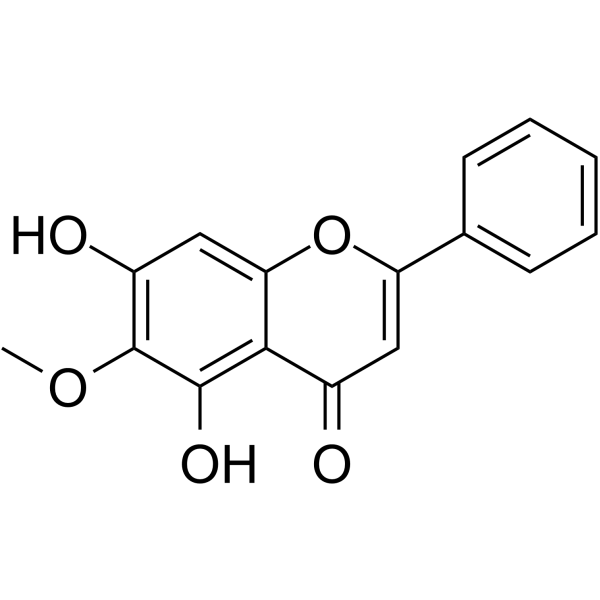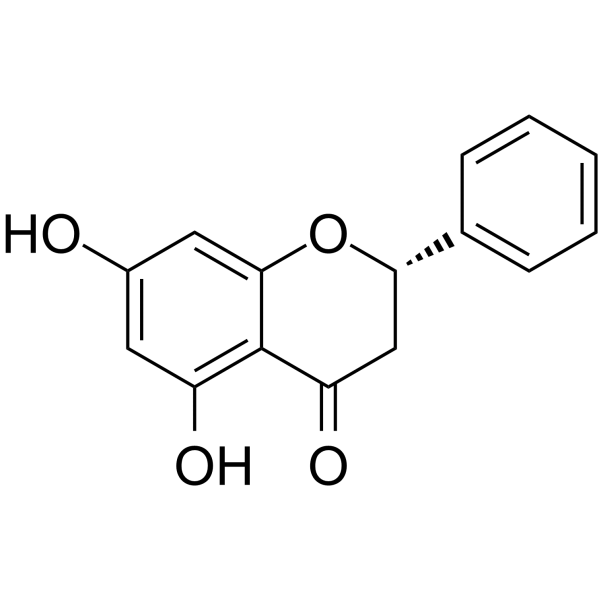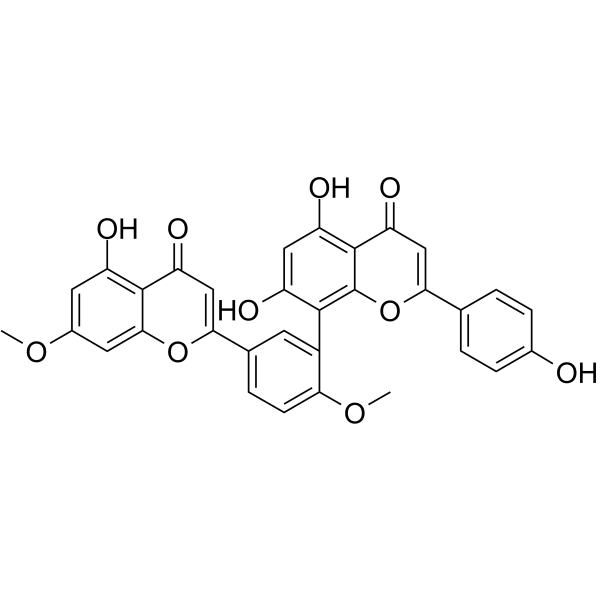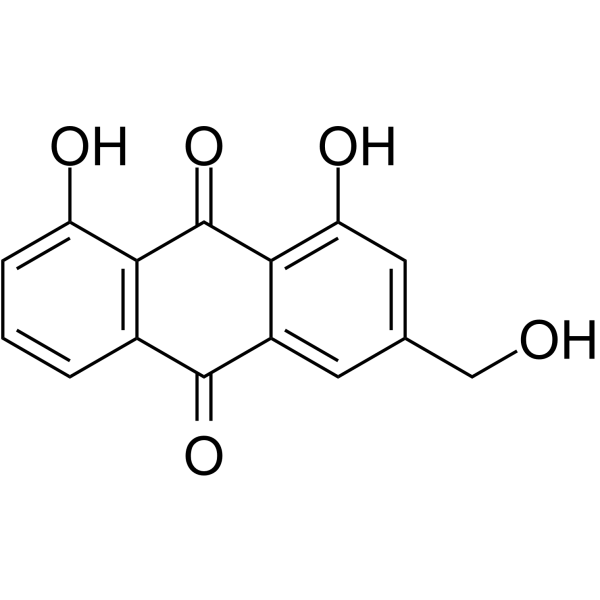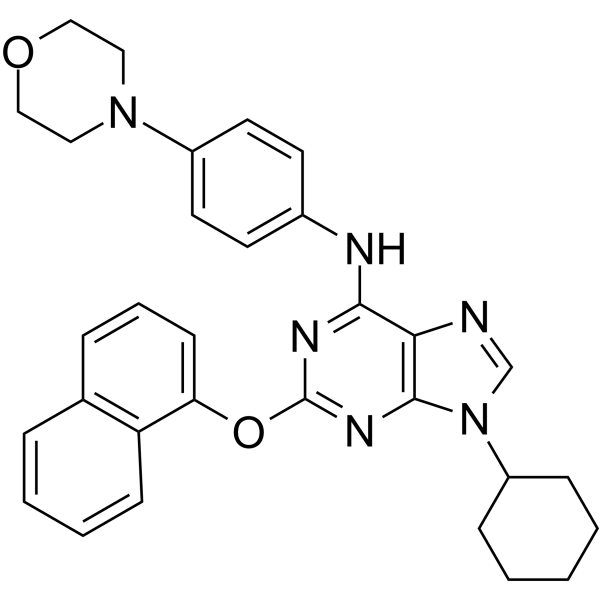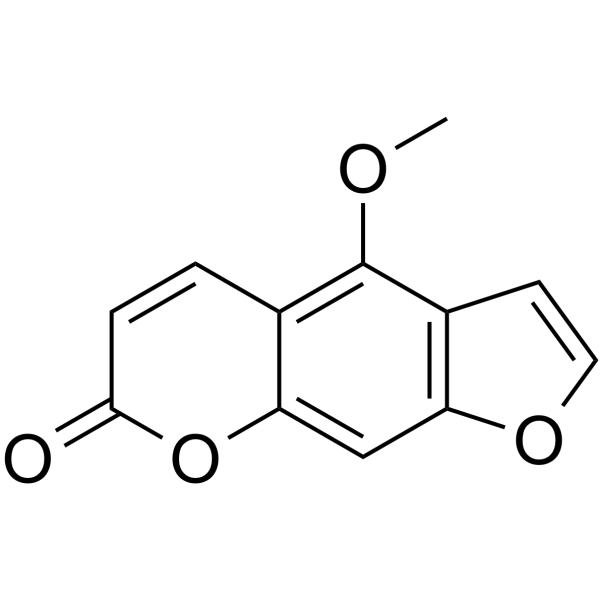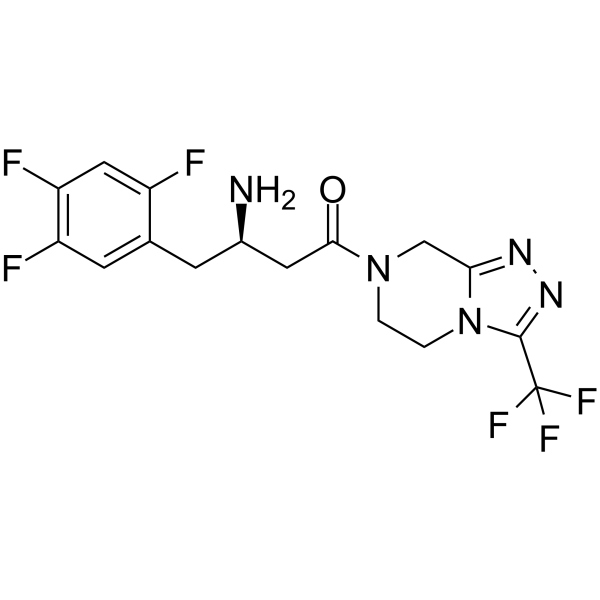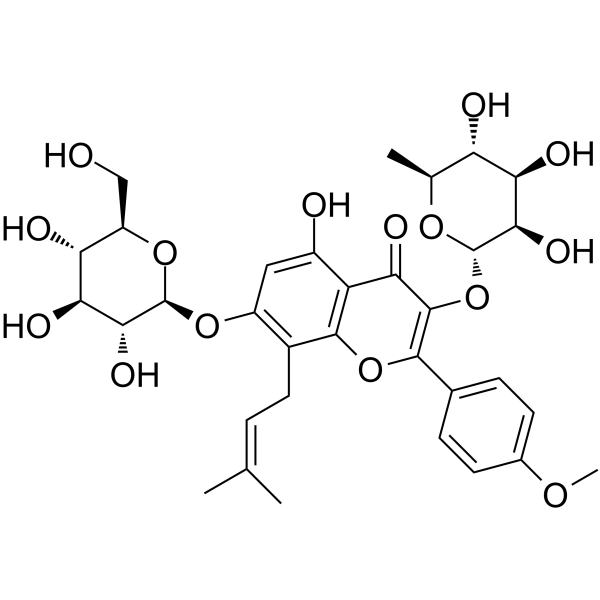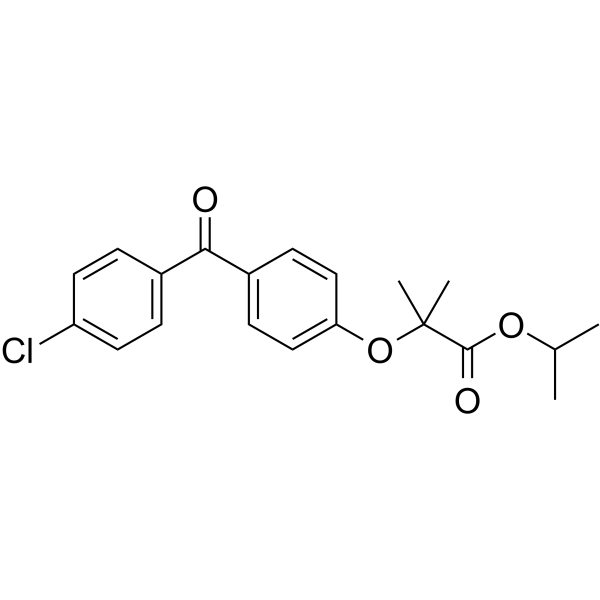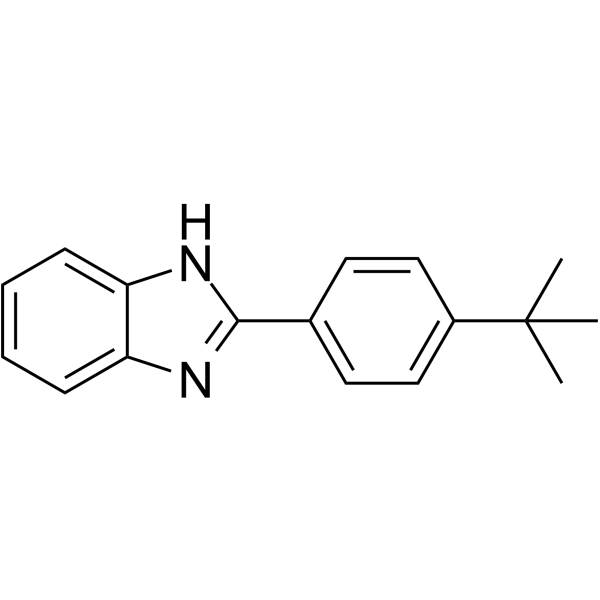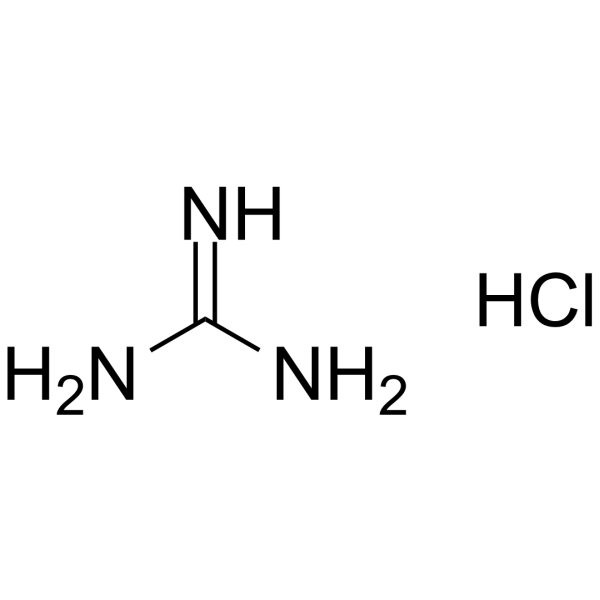|
BP12678
|
Nobiletin
|
|
|
|
|
Nobiletin is a natural polymethoxylated flavone isolated from citrus peels with anti-inflammatory and anti-tumor activities. Nobiletin is practically insoluble (in water) and an extremely weak acidic compound (based on its pKa).
|
|
BP12679
|
Rhein
|
|
|
|
|
Rhein is an anthraquinone compound extracted from Polygonaceae Rheum Officinale with anti-inflammation and antitumor activities.
|
|
BP12680
|
Berbamine
|
|
|
|
|
Berbamine has high binding affinity toward the (GGA);G-quadruplex. Berbamine and its derivatives are promising agents to suppress liver cancer growth by targeting CAMKII. Berbamine may be the first ATP-competitive inhibitor of CaMKII γ, could be as a new type of molecular targeted agent through inhibition of the CaMKII γ activity for treatment of leukemia. Berbamine can enhance the antitumor activity of gemcitabine by inhibiting cell growth and inducing apoptosis, possibly through the regulation of the expression of apoptosis-related proteins and the activation of TGF-β/Smad signaling pathway. Berbamine confers cardioprotection against I/R injury by attenuating [Ca(2+)inf(i) overloading and preventing calpain activation through the activation of the PI3K-Akt-GSK3β pathway and, subsequently, opening of the mitoK(ATP) channel.
|
|
BP12681
|
Lucanthone
|
|
|
|
|
Lucanthone is an endonuclease inhibitor of Apurinic endonuclease-1 (APE-1).
|
|
BP12682
|
Oroxylin A
|
|
|
|
|
Oroxylin A has various anti-tumor effects including apoptosis, cell cycle arrest, drug-resistant reversion. Oroxylin A possesses abilities of inhibiting the ATRA-induced IL-6 production via modulation of LAP/LIP/CHOP in leukemia cell lines, which could providing a therapeutic strategy for RAS. Oroxylin A inhibits UCP2s triggers the MPTP opening, and promotes the apoptosis in CaCo-2 cells; uncoupling protein 2 plays a key role in mitochondrial apoptotic pathway. Oroxylin A inhibits N1ICD translocating to the nucleus and binding to epithelial-mesenchymal transition-related transcription factor Snail, thus suppressing the invasion and migration of MCF-7 cells. Oroxylin A improves the sensitivity of K562/ADM cells by increasing apoptosis in leukemic cells and decreasing the expression of CXCR4 and PI3K/Akt/NF-κB pathway, and probably served as a most promising agent for CML treatment.
|
|
BP12683
|
Pinocembrin
|
|
|
|
|
Pinocembrin is a flavanone, a type of flavonoid. It is an antioxidant found in damiana, honey, fingerroot, and propolis.
|
|
BP12684
|
Hydrangenol
|
|
|
|
|
Hydrangenol is isolated from Hydrangea serrata leaves exerts antiphotoaging activity in vitro.
|
|
BP12685
|
Ginkgetin
|
|
|
|
|
Ginkgetin has anti-influenza virus and anti-fungal activities. Ginkgetin has anti-inflammatory activity, can down-regulates COX-2 induction in vivo against skin inflammatory responses. Ginkgetin is a good STAT3 inhibitor and may be a useful lead molecule for development of a therapeutic STAT3 inhibitor. Ginkgetin induces apoptosis in PC-3 cells via activation of caspase 3 and inhibition of survival genes as a potent chemotherapeutic agent for prostate cancer treatment. Ginkgetin has neuroprotective activity against neurological injury induced by MPTP occurs via regulating iron homeostasis, it may provide neuroprotective therapy for Parkinson's disease and iron metabolism disorder related diseases.
|
|
BP12686
|
Aloe emodin
|
|
|
|
|
Aloe-emodin is an interferon-inducing agent, for JEV (IC50=1 μg/mL) and EV71(IC50=0.33 μg/mL ).
|
|
BP12687
|
Emetine
|
|
|
|
|
Emetine extracted from the roots of the roots is an effective antiprotozoal and emetic agent, and effectively inhibits autophagy, anti-malarial, anti-bacterial and anti-ameba effects.
|
|
BP12688
|
Purmorphamine
|
|
|
|
|
Purmorphamine, which directly binds and activates Smoothened, blocks BODIPY-cyclopamine binding to Smo. It also is an inducer of osteoblast differentiation.
|
|
BP12689
|
Bergapten
|
|
|
|
|
Bergapten, a psoralen, inhibits cell replication.
|
|
BP12690
|
Graveoline
|
|
|
|
|
Graveoline is an apoptosis and autophagy inducer in skin melanoma cancer cells
|
|
BP12691
|
LC3-mHTT-IN-AN1
|
|
|
|
|
LC3-mHTT-IN-AN1 is a mHTT-LC3 linker compound that interacts with both mutant huntingtin protein (mHTT) and LC3B. LC3-mHTT-IN-AN1 targeted mHTT to autophagosomes reduces the levels of mHTT in an allele-selective manner in cultured Huntington disease (HD) mouse neurons.
|
|
BP12692
|
Sitagliptin
|
|
|
|
|
Sitagliptin, a new oral hypoglycemic (anti-diabetic drug), is a new dipeptidyl peptidase-4 (DPP-4) inhibitor. This enzyme-inhibiting drug is used either alone or in combination with metformin or thiazolidinedione for treatment of type 2 diabetes mellitus. The drug can competitively inhibit a protein/enzyme and DPP-4, that leads to an incremental amount of active incretins (GLP-1 and GIP), the diminished amount of release of glucagon and increased release of insulin.
|
|
BP12693
|
Icariin
|
|
|
|
|
Icariin is a flavonol glycoside, inhibiting PDE5 and PDE4 activities. Icariin also is a PPARα activator.
|
|
BP12694
|
kaempferide
|
|
|
|
|
Kaempferide triglycoside inhibits the proliferation of native and estrogen receptor beta overexpressing colon cancer cells through a mechanism not mediated by ligand binding dependent estrogen receptor activation.
|
|
BP12695
|
Fenofibrate
|
|
|
|
|
Fenofibrate is a peroxisome proliferator receptor alpha agonist. Fenofibrate is a synthetic phenoxy-isobutyric acid derivate and prodrug with antihyperlipidemic activity.
|
|
BP12696
|
ZLN005
|
|
|
|
|
ZLN005 is an effective and tissue-specific transcriptional activator of PGC-1α.
|
|
BP12697
|
Guanidine hydrochloride
|
|
|
|
|
Guanidine hydrochloride is a strong organic base existing primarily as guanidium ions at physiological pH. It is found in the urine as a normal product of protein metabolism. It is also used in laboratory research as a protein denaturant.
|
